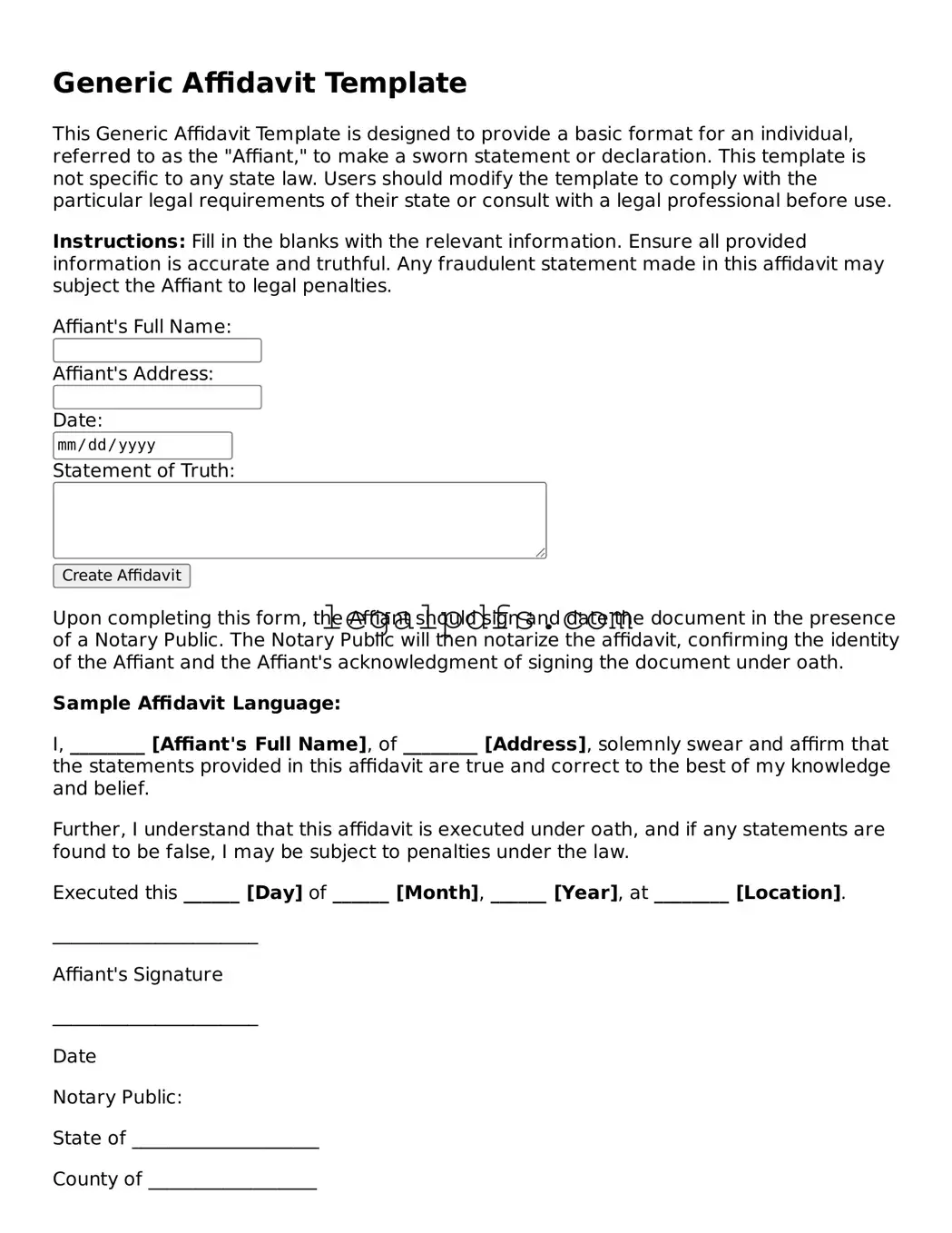Generic Affidavit Template
This Generic Affidavit Template is designed to provide a basic format for an individual, referred to as the "Affiant," to make a sworn statement or declaration. This template is not specific to any state law. Users should modify the template to comply with the particular legal requirements of their state or consult with a legal professional before use.
Instructions: Fill in the blanks with the relevant information. Ensure all provided information is accurate and truthful. Any fraudulent statement made in this affidavit may subject the Affiant to legal penalties.
Upon completing this form, the Affiant should sign and date the document in the presence of a Notary Public. The Notary Public will then notarize the affidavit, confirming the identity of the Affiant and the Affiant's acknowledgment of signing the document under oath.
Sample Affidavit Language:
I, ________ [Affiant's Full Name], of ________ [Address], solemnly swear and affirm that the statements provided in this affidavit are true and correct to the best of my knowledge and belief.
Further, I understand that this affidavit is executed under oath, and if any statements are found to be false, I may be subject to penalties under the law.
Executed this ______ [Day] of ______ [Month], ______ [Year], at ________ [Location].
______________________
Affiant's Signature
______________________
Date
Notary Public:
State of ____________________
County of __________________
Subscribed and sworn to (or affirmed) before me on this ___ day of ___________, ______, by ________________ [Affiant's Full Name], proven to me on the basis of satisfactory evidence to be the person(s) who appeared before me.
______________________
(Signature of Notary Public)
My Commission Expires: _______________
